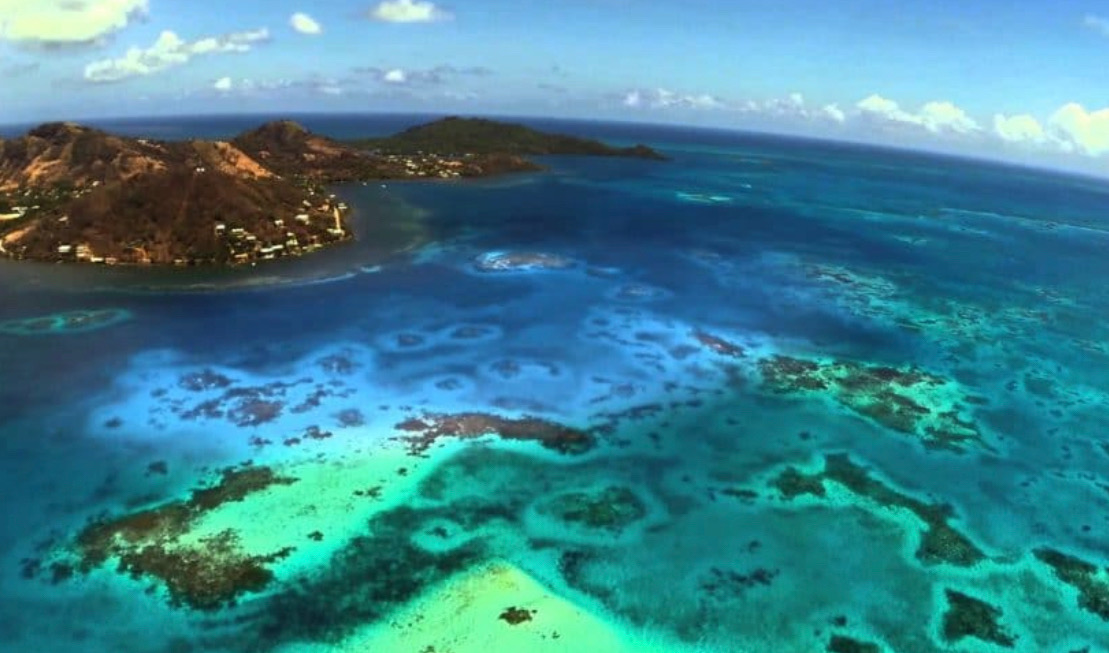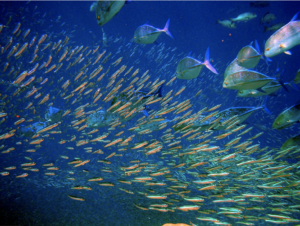
When your home suddenly becomes too hot to live in, your only options are to move or die. Sounds dramatic, but that’s the situation facing many fish species as ocean temperatures rise in response to climate change.
The uneven rate of ocean warming around the world, however, means that there are both winners and losers in this fish tale (pun intended), depending on which species can adapt and how quickly.
Our dependence on fisheries for food and employment makes this our story too. Adopting sustainable fisheries management and mitigation strategies will not only benefit marine ecosystems sensitive to the effects of climate change, but also those communities whose lives and livelihoods are tightly linked to a healthy ocean.
Fish In Numbers
-
- A recently published paper on the effects of ocean warming found that from 1930 to 2010, on average, fisheries have declined by 4.1%, while some East Asia fisheries have declined by 15-35%
- By 2050, global fisheries are predicted to increase 30-70% in high latitudes as the range of some fish species expands, but drop up to 40% in the tropics
The Ocean Economy in Numbers
-
- The Food and Agriculture Organization reported that:
- roughly half the world population relies on fish as a vital source of protein, with coastal communities consuming up to 90% of their dietary intake from fish; and
- and that the world fishing market in 2016 was valued at $143 billion and employed 59.6 million people.
- The Food and Agriculture Organization reported that:
When the Oceans Warm, Fish Move
The ocean has absorbed a staggering 93% of excess heat caused by climate change, the majority of which has been stored in the upper ocean where fish are commonly found. All of that additional heat has caused the average global ocean temperature to increase by 1.3ºF over the past century.
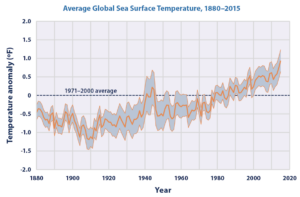
Fish are very sensitive to sudden environmental disturbances since different species have evolved to tolerate specific temperature ranges and habitats. With the rapid rise in ocean temperature, some species have begun moving further north or into deeper, cooler waters to survive.
These shifts may bode well for temperate regions where fish catch numbers have seen an uptick as certain species have been able to expand their range further north. But the losses in local fisheries outweigh the gains, particularly in tropical regions.
In one dramatic recent example, a rapid decline in Pacific cod fish stocks has occurred due to soaring ocean temperatures off the coast of Alaska over the past few years. In response, the Pacific cod fishery in the Gulf of Alaska was placed in a first-ever closure for the 2020 season.
Future Projections Show Accelerating Change
By 2100, average global ocean temperatures are predicted to increase by 1.8-5.4ºF, depending on the amount of greenhouse gases we emit by then. In response, almost 60% of fish are predicted to move miles to thousands of miles away from their previous locations, potentially too far or too deep for even local fishermen with the largest boats to reach.
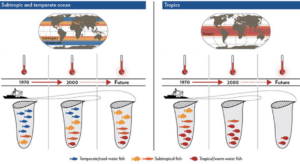
And while fishing industries in the north may see being on the receiving end of incoming fish species as a bonus, higher catch numbers don’t always mean higher revenues. Some species are highly economically valuable compared to species geared to displace them, but are projected to have significant declines by 2050. Atlantic Salmon (~70% reduction), for example, tend to achieve higher market value than the northward-shifting Atlantic Cod.
Other communities may be left behind. As is the case with other environmental crises, ocean warming will disproportionately affect communities least equipped to respond. Roughly 85% of coastal countries will face some level of reduced productivity by 2050.
Those living in developing countries are highly dependent on fish for food and employment yet have the lowest capacity to adapt, so they will be particularly vulnerable.
Security Concerns Rise with Temperatures
Shifting fish distributions across geopolitical boundaries creates situations primed for disputes and advantageous exploitation. You might be surprised to learn that 25% of post-World War II militarized disputes were over fisheries. This is a troubling statistic if, as is predicted, roughly 35% more fisheries will span new jurisdictions by 2060.
Previous agreements on management plans such as fishing limits may no longer makes sense as fish ranges expand and contract over time. We’re already behind the curve when it comes to adaptive management practices if you consider that fish populations have been shifting northward for years, but catch quotas have remained static for the past two decades.
Global Adaptive Management is Critical
Area-based management, such as marine protected areas (MPAs), has been the go-to policy approach for decades. Adopted into many national and international objectives and governance frameworks, MPAs continue to be an effective way to achieve sustainable ocean resources and services.
Policy In Numbers
-
- Sustainable Development Goal 14 set an objective to conserve 10% of the ocean as MPAs by 2020
- The latest reported statistics are that 7.59% coverage has been achieved, but only 1.9% are exclusively no-take MPAsMPA coverage is predominantly fragmented within national jurisdictions, leaving the high seas mostly unprotected.
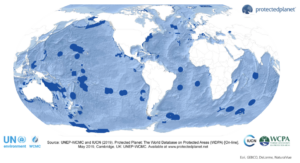
However, the extent and configuration of traditional MPAs may not effectively manage future outcomes that are difficult to predict. We need to improve the global MPA strategy by integrating linkages between climate, biodiversity and sustainability so it’s more adaptive to potential future challenges.
A flexible, science-based management approach will facilitate identification and protection of suitable habitats as ocean temperatures evolve over time. Empowered with relevant information, fisheries managers can plan conservation measures to establish effective MPAs, as well as update fishing restrictions to maintain stocks.
There is growing interest in expanding protected areas to represent the diversity of critical marine habitats where fish stocks are projected to move. An exciting UN effort currently underway is centered on establishing a representative network of MPAs to protect marine biodiversity in the high seas. Referred to as the BBNJ treaty, it will be a new, legally binding convention.
Hopefully, adaptive management strategies such as representative network MPAs will quickly diffuse into all coordinated policy efforts. The pace of climate change demands urgent, innovative, and collaborative action.
Your Choices Make a Difference Too
Eat sustainable, buy sustainable with the help of many useful certifications and tools such as:




